Australian Money
All About Our Notes & Coins
All About Our Notes & Coins
Australian money or Australian currency is the Australian dollar and consists of banknotes and coins. The Australian dollar divides into 100 cents.
Prior to the changeover to the current decimal system the Australian currency or Australian money system was based on the British sterling system with the pound being the main unit. There were 12 pence to a shilling and 20 shillings to a pound.
There were a lot of forms of currency used after the arrival of the first European settlers in 1788. Barter was used in the early years and payments in merchandise such as rum often replaced money.
Well we don't do that now, of course, but if you want to find out the conversion for different money into Aussie Dollars or even into other money just put the details into the converter.
It won't convert your money into rum but if you visit here you can do that in a pub!
Australia became an independent nation after federation in 1901 and the federal government became responsible for the currency.
In 1910 the Australian Notes Act was passed and in 1913 the first series of Australian notes based on the old British system were issued.
Australian money changed to the current decimal based currency system on the 14th February 1966.
In the lead up to the changeover to decimal currency there was a concentrated education program to get the public ready including media coverage with advertisements and a great little jingle.
The jingle was to the tune of the famous Australian song 'Click Go The Shears' and went like this:
In come the dollars and in come the cents
to replace the pounds and the shillings and the pence.
Be prepared folks when the coins begin to mix
on the 14th of February 1966.Clink go the cents folks clink, clink, clink.
Changeover day is closer than you think.
Learn the value of the coins and the way that they appear
and things will be much smoother when the decimal point is here.
In come the dollars and in come the cents
to replace the pounds and the shillings and the pence.
Be prepared folks when the coins begin to mix
on the 14th of February 1966.
I was only a little kid when the changeover to the current Australian money happened but before that I can remember going into Tibooburra (where I grew up) with my parents, my Dad would give me a couple of pennies, and if I was really lucky he would give me sixpence or two to spend at the shop.
And that little jingle got into your head because even though I was just a kid I can still remember it all these years later.
Australian Notes
Australian notes are some of the most colourful in the world and each note comes in different colours so they are easy to identify and distinguish from each other.
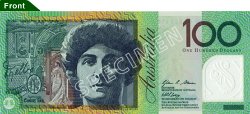
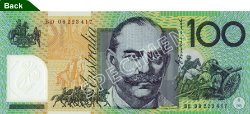
The $100 note features Dame Nellie Melba (1861-1931) world famous soprano and General Sir John Monash (1865-1931) revered and distinguished soldier, engineer and administrator.
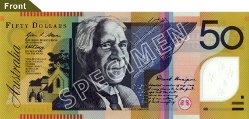
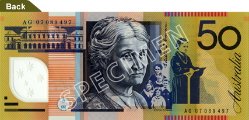
The $50 note features David Unaipon (1872-1967) Aboriginal writer and inventor and Edith Cowan (1861-1932) Australia's first female parliamentarian.
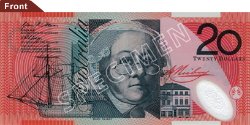
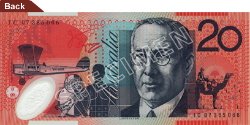
The $20 note features Mary Reibey (1777-1855) who came to Australia as a convict in 1792 and went on to become a respected and successful businesswoman and Reverend John Flynn (1880-1951) founder of the Royal Flying Doctor Service - the world's first aerial medical service.
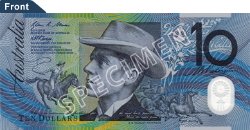
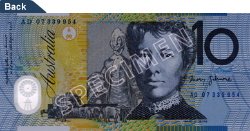
The $10 note features AB 'Banjo' Paterson (1864-1941) famous Australian poet and Dame Mary Gilmore (1865-1962) journalist, poet and social reform campaigner.
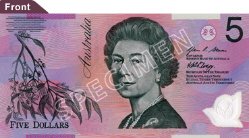
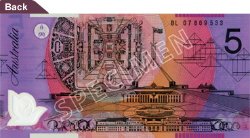
The $5 note features Her Majesty Queen Elizabeth II and Parliament House in the Nation's Capital of Canberra.
All images of Australian notes courtesy of the Reserve Bank of Australia.
Australian Coins
All Australian coins have the portrait of Queen Elizabeth II on the front.

The $2 coin features an Aboriginal tribal elder set against a background of the Southern Cross and native grasstrees.

The $1 coin features five kangaroos.
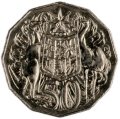
The 50 cent coin features the Australian Coat of Arms.
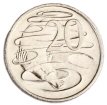
The 20 cent coin features a platypus.

The 10 cent coin features a male lyrebird dancing.

The 5 cent coin features an echidna.
All images of Australian coins courtesy of the
Royal Australian Mint
The $1 coin replaced the $1 note in 1984 and the $2 coin replaced the $2 note in 1988 .
The 50 cent coin, the $1 coin and the $2 coin often feature commemorative designs.
2 cent and 1 cent coins were phased out in 1990.
All prices are either rounded up or rounded down. For example if you buy something worth $1.99 you pay $2 or if you buy something for $1.92 you pay $1.90 - it makes it so much easier and lighter in the purse or pocket.
Australia was the first country in the world to have a complete system of bank notes made from revolutionary polymer (plastic). The technology to produce these notes was developed in Australia.
The first Australian money polymer notes were introduced in 1988 with a $10 note to commemorate the bicentenary of European settlement in Australia. A complete series of polymer notes was issued between 1992 and 1996.
The polymer notes last four times as long as conventional paper notes and provide much greater security against counterfeiting.
Go to next facts page: Australia population
Return from Australian Money to Australian-Information-Stories home page


